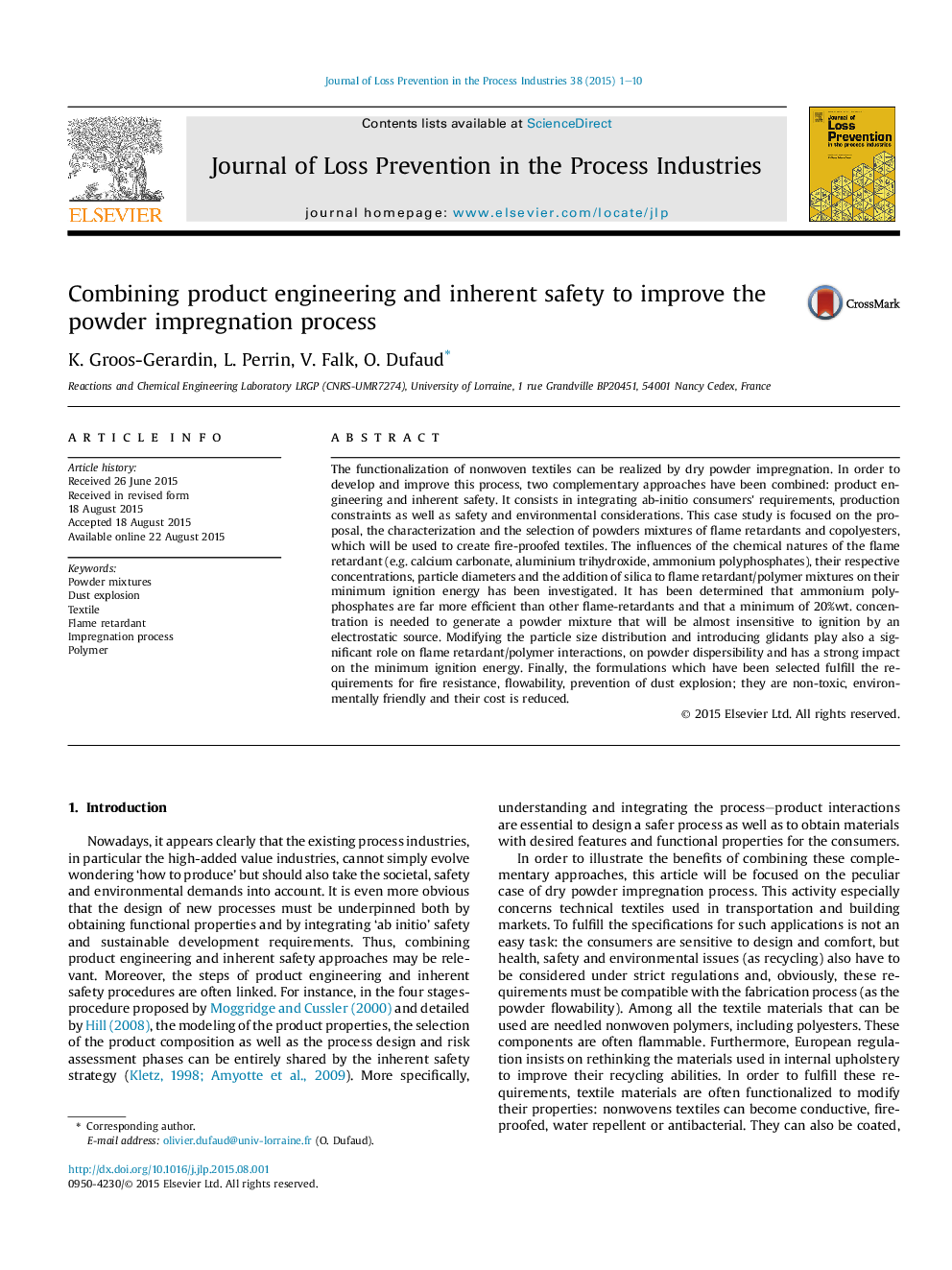| Article ID | Journal | Published Year | Pages | File Type |
|---|---|---|---|---|
| 585954 | Journal of Loss Prevention in the Process Industries | 2015 | 10 Pages |
•Ammonium polyphosphates mixed with polyester are effective flame retardant agent to reduce dust explosion hazard.•The powder mixture is almost insensitive to ignition when at least 20%wt. of ammonium polyphosphate is added to the binder.•The addition of a glidant such as silica improves the powder flowability but enhances its dispersibility and ignitability.•Combining product engineering and inherent safety approaches may be relevant to ensure both process performance and safety.
The functionalization of nonwoven textiles can be realized by dry powder impregnation. In order to develop and improve this process, two complementary approaches have been combined: product engineering and inherent safety. It consists in integrating ab-initio consumers' requirements, production constraints as well as safety and environmental considerations. This case study is focused on the proposal, the characterization and the selection of powders mixtures of flame retardants and copolyesters, which will be used to create fire-proofed textiles. The influences of the chemical natures of the flame retardant (e.g. calcium carbonate, aluminium trihydroxide, ammonium polyphosphates), their respective concentrations, particle diameters and the addition of silica to flame retardant/polymer mixtures on their minimum ignition energy has been investigated. It has been determined that ammonium polyphosphates are far more efficient than other flame-retardants and that a minimum of 20%wt. concentration is needed to generate a powder mixture that will be almost insensitive to ignition by an electrostatic source. Modifying the particle size distribution and introducing glidants play also a significant role on flame retardant/polymer interactions, on powder dispersibility and has a strong impact on the minimum ignition energy. Finally, the formulations which have been selected fulfill the requirements for fire resistance, flowability, prevention of dust explosion; they are non-toxic, environmentally friendly and their cost is reduced.
